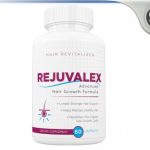Healthline Diet Score: 3.5 out of 5
Fasting is a hot topic in health and wellness, and for good reason.
It’s been associated with a wide range of benefits — from weight loss to boosting your body’s health and life span.
There are many types of fasting methods, such as intermittent fasting and water fasting.
“Fast Mimicking” is a recent fasting trend that restricts calories for a set time period.
This article reviews the Fasting Mimicking Diet, so you can decide whether it’s right for you.
RATING SCORE BREAKDOWN
THE BOTTOM LINE: The Fasting Mimicking Diet is a high-fat, low-calorie intermittent fasting method that supplies prepackaged meals for five days. It may help you lose weight but is pricey and may not be better than standard intermittent fasting diets.
What Is the Fasting Mimicking Diet?
The Fasting Mimicking Diet was created by Dr. Valter Longo, an Italian biologist and researcher.
He sought to replicate the benefits of fasting while still providing the body with nutrition. His modifications avoid the calorie deprivation associated with other types of fasting.
The Fasting Mimicking Diet — or “fast mimicking” — is a type of intermittent fasting. However, it differs from more traditional types, such as the 16/8 method.
The Fasting Mimicking protocol is based on decades of research, including several clinical studies.
Though anyone can follow the principles of fast mimicking, Dr. Longo sells a five-day weight loss program called the ProLon Fasting Mimicking Diet through L-Nutra, a nutrition technology company that he started.
How Does It Work?
The ProLon Fasting Mimicking Diet plan includes five-day, prepackaged meal kits.
All meals and snacks are whole-food derived and plant based. The meal kits are low in carbs and protein yet high in healthy fats like olives and flax.
During the five-day period, dieters only consume what’s contained within the meal kit.
Day one of the diet provides approximately 1,090 kcal (10% protein, 56% fat, 34% carbs), while days two through five provide only 725 kcal (9% protein, 44% fat, 47% carbs).

The low-calorie, high-fat, low-carb content of the meals causes your body to generate energy from noncarbohydrate sources after glycogen stores are depleted. This process is called gluconeogenesis (2).
According to one study, the diet is designed to provide 34–54% of normal calorie intake (3).
This calorie restriction mimics the body’s physiological response to traditional fasting methods, such as cell regeneration, decreased inflammation, and fat loss.
- Day one of the diet provides approximately 1,090 kcal (10% protein, 56% fat, 34% carbs).
- Days two through five provide only 725 kcal (9% protein, 44% fat, 47% carbs).
- The low-calorie, high-fat, low-carb content of the meals causes your body to generate energy.
- Noncarbohydrate sources after glycogen stores are depleted. This process is called gluconeogenesis (2).
ProLon recommends that all dieters consult a medical professional — such as a doctor or registered dietitian — before starting the five-day fast.
The ProLon five-day plan is not a one-time cleanse and must be followed every one to six months to obtain optimal results.







